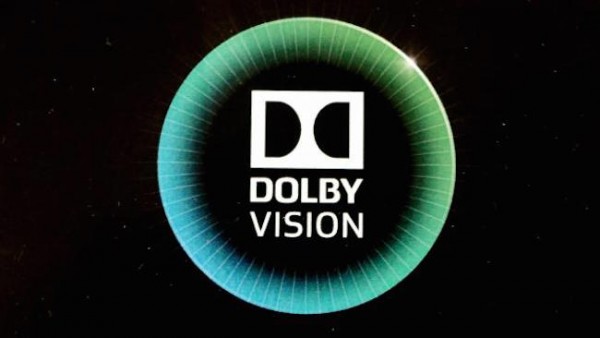
One of the more delightful reveals from CES 2017 was the inclusion of Dolby Vision HDR in Sony’s flagship series of TVs coming in 2017 which includes the X930/X940E series and the OLED A1E. What’s made this possible is Sony’s custom X1 Extreme processor which can be found inside both TV sets. In fact, the highly rewarded Z9D from Sony which arrived in October of 2016 is also getting Dolby Vision HDR as it utilizes the same chipset inside, allowing Sony to bring the feature via a firmware update.
All of this of course begs the question – just what the hell is Dolby Vision HDR? A lot of us have been hearing about HDR for nearly two years now which typically refers to HDR10, something that Sony and Samsung both had a hand in creating. In fact, all 4K Blu-ray with HDR must support HDR10. Here is John Archer from What Hi-Fi breaking down the two formats:
The most significant advantage of Dolby Vision HDR versus HDR10 is the addition of dynamic metadata to the core HDR image data.
This metadata carries scene-by-scene instructions that a Dolby Vision-capable display can use to make sure it portrays the content as accurately as possible. Dolby Vision-capable TVs combine the scene-by-scene information received from the source with an awareness of their own capabilities in terms of brightness, contrast and colour performance.
With HDR10 content, your HDR TV only receives static metadata; relatively basic ‘global’ information on the content being shown that applies to the entire film or TV show.
It can’t provide a display with updates on how each specific shot or scene should be shown. Nor does HDR10 carry the same facility for continually optimising the picture to the capabilities of the screen it’s showing on.
Dolby Vision is built on the same core as HDR10, which makes it relatively straightforward for content producers to create HDR10 and Dolby Vision masters together. This means that a Dolby Vision-enabled Ultra HD Blu-ray can also play back in HDR10 on TVs that only support that format.
As a rough recap:
In a head-to-head comparison of Dolby Vision and HDR10, Dolby Vision images appear to contain more tone definition in bright areas; more balanced, nuanced and natural colours right across the spectrum; better contrast range management; and a greater sense of detail – presumably a side effect of the colour and light management improvements.
Like 4K, the biggest challenge with Dolby Vision HDR is going to be finding content.
There are currently no Dolby Vision Ultra HD Blu-ray discs on the market. However, Lionsgate, Sony, Universal and Warners have all promised Dolby Vision UHD Blu-ray releases for 2017 – though no specific titles have yet been announced.
Things are more advanced on the streaming side. In the UK, both Netflix and Amazon support Dolby Vision HDR streams, while in the US they are joined by VUDU.
The upcoming PC game Mass Effect: Andromeda will support Dolby Vision, heralding a whole new gaming outlet.
Dolby Vision can also be applied in a live broadcast environment – though we’re not aware yet of any broadcaster announcing plans to use it. And for broadcasting HDR 4K programmes, another format, HLG, seems to be in prime position.
As for the format’s future:
Dolby has gone out of its way to dismiss talk of any possible format war, positioning its technology as a ‘value added’ proposition in relation to HDR10, not a direct competitor.
Dolby Vision is essentially extra information applied on top of an HDR10 core, so it’s easy to ensure that all Dolby Vision content is also compatible with devices that only support HDR10.
It’s not mandatory for a content creator to deliver both HDR10 and Dolby Vision support though. US streaming platform VUDU did not initially support HDR10 alongside Dolby Vision, nor did Vizio’s first Dolby Vision TVs.
It’s frankly unfortunate that Dolby Vision HDR wasn’t included in the 4K Blu-ray spec which means it’s always going to be a ‘value added’ and not the default spec. Sure Sony is now supporting it but content for it is next to nonexistent and most 4K HDR TVs sold to date cannot utilize it. Even in Sony’s case, as it stands the feature is limited to their flagship series which is their lowest sold when compared to their other, more budget friendly 4K TVs. Unfortunately this is the typical clusterfuck that we see in the home theater world. The good news is that if adoption for Dolby Vision picks up between manufacturers, hopefully in a year or two, the clearly superior format becomes the standard to which all 4K HDR content adheres.
From there, it’s going to be up to Netflix and other streaming platforms to pick up the slack and ensure that we have access to Dolby Vision HDR content because for them, it’s as ‘simple’ as having multiple streams of a movie or TV show available in varying formats. For physical media, the number of challenges facing it – from getting 4K HDR Blu-rays in consumer hands who then have to make sure their players are compatible with Dolby Vision HDR and not just HDR, surely means it’s already a lost cause.
After all, to you and I, nothing might touch the quality of a Blu-ray but to a whole generation growing up, the idea of buying physical media versus a digital download or streaming is as archaic as buying software from a store and installing it via your computer’s DVD drive.
